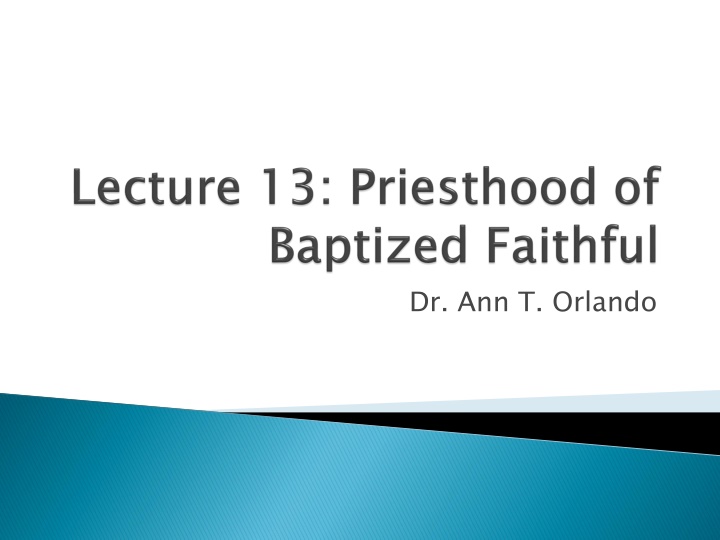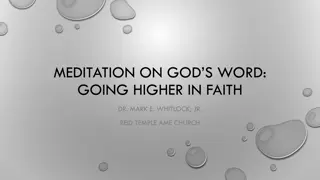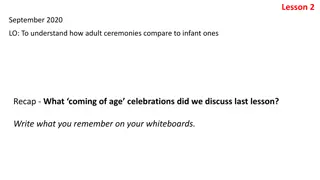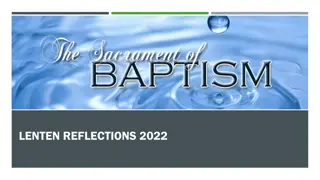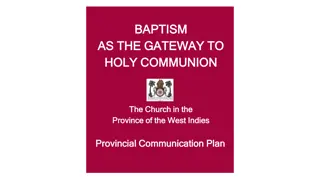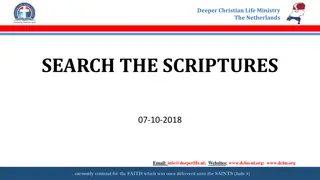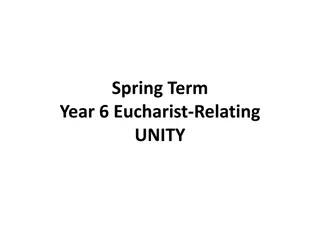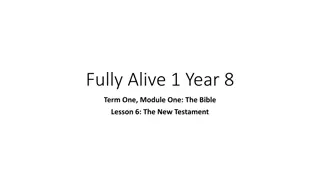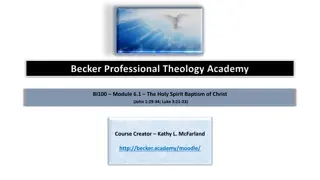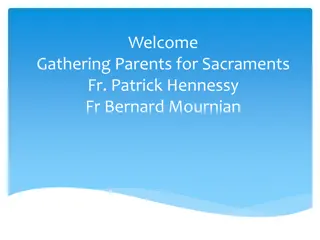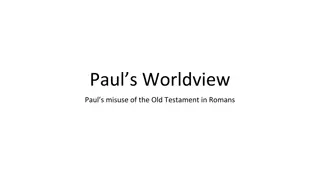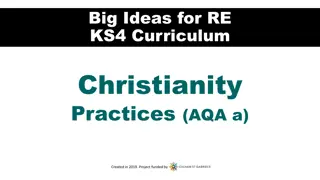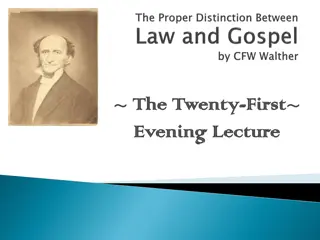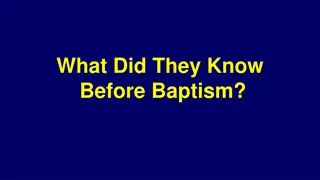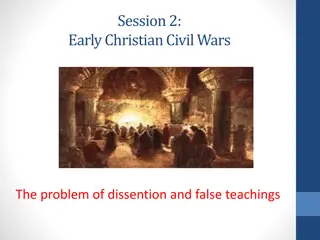Insights on Baptism and Christian Faith in New Testament Teachings
Explore the significance of baptism as the ordination of Christian faithful rooted in the Gospels and New Testament, with references to key biblical passages and teachings from prominent theologians. Discover the connection between baptism, sacrifice, forgiveness of sins, and acceptable worship in the Christian faith tradition.
Download Presentation

Please find below an Image/Link to download the presentation.
The content on the website is provided AS IS for your information and personal use only. It may not be sold, licensed, or shared on other websites without obtaining consent from the author.If you encounter any issues during the download, it is possible that the publisher has removed the file from their server.
You are allowed to download the files provided on this website for personal or commercial use, subject to the condition that they are used lawfully. All files are the property of their respective owners.
The content on the website is provided AS IS for your information and personal use only. It may not be sold, licensed, or shared on other websites without obtaining consent from the author.
E N D
Presentation Transcript
Baptism as the ordination of Christian faithful New Testament basis Gospels Heb 12-13 1 Peter 2:5-9 Rom 12 Pope St. Leo the Great Augustine St. Peter Chrysologus What is the sacrifice offered by baptized after the time of martyrdom
Johns baptism for the forgiveness of sins Jesus baptism will be one of the Holy Spirit See for example Matt 3 Jesus baptism and relation to Holy Spirit are recounted in all four Gospels The final command in Matt 28
Final chapters of Hebrews addresses the work of Christians 12:28 refers to the acceptable worship which Christians should offer The nature of that worship seems to be described in 13 See especially 13:15-16 and the description of a sacrifice of praise Theodoret expands on this at the end of his Commentary
Recall from Origen reading Leviticus (Homilies on Leviticus 1:5) in the light of Paul: The priest, and his sons, is in you the mind which is also its understanding in you who are rightly called a priest and sons of a priest for they are the only ones who perceive God and are capable of the knowledge of God. Therefore the divine Word desires that you offer your flesh to God in purity with reasonable understanding, as the Apostle says, A living offering holy and pleasing to God, your reasonable service. (Rom 12:1)
1 Peter may have been a baptismal homily Christians are called to be the living stones Spiritual House (Temple) Holy Priesthood Royal priesthood Augustine, CoG XX.10: Rather, just as we call all Christians christs by virtue of their mystical anointing, so we call all Christians priests (sacerdotes) because they are all members of the one priest. That is why the apostle Peter says that they are a holy people, a royal priesthood.
Period of preparation and study Best time for Baptism is at the Easter Vigil Baptismal rite has 2 parts Baptism with water for forgiveness of sins Anointing with oil to become consecrated (ordained) to the Christian way of life Re-baptism controversy affirms that Baptism (ordination) leaves a permeant mark, character, on the recipient
Oil was an anointing into the royal priesthood of Jesus Christ This is the ordination of the faithful Tertullian, On Baptism After that we come up from the washing and are anointed with the blessed unction, following that ancient practice by which, ever since Aaron was anointed by Moses, there was a custom of anointing them for priesthood with oil out of a horn. That is why the high priest is called a christ , from 'chrism' which is the Greek for 'anointing': and from this also our Lord obtained his title, though it had become a spiritual anointing, in that he was anointed with the Spirit by God the Father
If priesthood of faithful baptized rooted in willingness to suffer martyrdom, How to understand that priesthood after the time of martyrdom In other words, what is the sacrifice in imitation of Jesus Augustine, Sermon 4, offers a way to be like the martyrs
Bishop of Rome 440-461 Deeply engaged in Christological controversies Leo s Tome as basis for Chalcedon Deeply engaged in politics attempt to settle warfare between Roman Empire and barbaric invasions Sermon 4 Written early in his pontificate, possibly in celebration of the anniversary Emphasis on priesthood of all Christians and their relation to ministerial priesthood
Archbishop of Ravenna 423-450 Ravenna was the de facto Byzantine capital of the Western Empire Strong supporter of Leo the Great against monophysites Died just before Council of Chalcedon Peter first referred to as Chrysologus (golden word) in 8thC when a collection of his sermons was compiled Saint and doctor of the Church
Much shorter than usual Patristic homilies Tended to focus on a few verses from the readings of the day But may be deceiving as there may have been 3 distinct homilies preached At the conclusion of each of the three readings Believed that homilies should be simple and direct We should speak to the populace in popular fashion. The parish ought to be addressed by ordinary speech. Matters necessary to all men should be spoken about as men in general speak. Natural language is dear to simple souls and sweet to the learned. Homily 43
Focus on Rom 12:1 in weeks after Easter Considers what does it mean to be a living sacrifice How is this related to priesthood of Christ Note references to martyrs Also note references to Cain
Augustine, Sermon 4 (especially the conclusion) Pope St Leo Great, Sermon 4 Peter Chrysologus, Sermons 108 and 109
